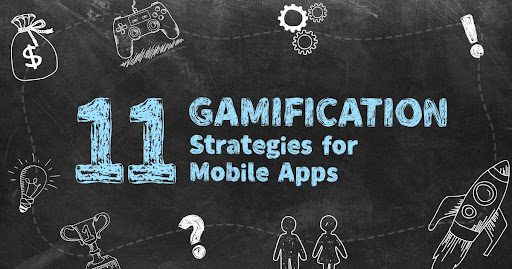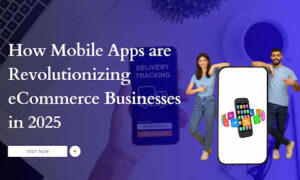Do you want to experience the gush of dopamine and get excited? Gamification strategies use these pleasant emotional rush to increase app acquaintance, boost user engagement and increase the number of app users.
Mobile apps with gamification elements and design are more popular and engaging than straightforward app structures. Always remember, combining a game or fun experience into an app will bring users back to using your app frequently.
By incorporating gamification strategies to your app you can answer the question – how to reach your target audience. Keep reading this post and learn more about the gamification strategies mentioned below.
But before we jump to the gamification strategies, let’s first understand what exactly gamification is in the next section.
What Is Mobile App Gamification?
Mobile app gamification refers to using game design elements, mechanics, and principles in mobile apps to encourage use and engage its users. Gamification involves game elements like points, badges, leaderboards, challenges, and rewards and applying them to non-game contexts, like mobile apps.
A language learning app might use gamification to encourage users to practice their language skills. And by providing them with challenges apps reward users for completing lessons or quizzes.
Gamification is more than just points, badges, and leaderboards. It introduces gaming elements to non-game environments to engage your app users more effectively. In other words, incorporating games’ fun, engaging parts and applying them to real-world, non-game activities, is all made up to gamify an app.
Online learning platforms, web portals, business apps on organizational LANs, and various other digital avenues use gamification to inspire focused interactions with the content of the app.
Remember how you feel while playing your favorite game? You are totally focused and immersed into the game, and the thrill of winning a level and the joy of accomplishing a task is what mattered. The quest of adventure is what gamification intends to create.
The gamification of apps is focused on stimulating the same feelings and thrill in its users. It can also be done for your daily mundane tasks, and become more productive and engaged in your work. Gamifying activities like online learning, recruitment, training, and orientational process, greatly support organizational productivity and help retain employees.
Developers now need to prioritize the human experience for app development, even while keeping in mind the efficiency of the job to be done. They need to take into account the things that users will enjoy doing and emotionally respond to the content of the app.
Above all, mobile app gamification is a way to create engaging and fun experiences for users that motivate them to use the app more frequently and achieve their goals. Now, if your mobile app has a special and unique gamifying element, you can make it stand out. For doing so, you can go for some of these gamification strategies given below to become an editors choice and make a place in the featured apps section.
Gamification Strategies
Gamification has become increasingly popular in recent years to engage and motivate users in various contexts, whether education, marketing, fitness, eCommerce, or any given segment.
Here are some of the best gamification strategies currently trending:
1.Progress Tracking
Allowing users to track their progress and creating a sense of accomplishment motivates them to use and stay on your app. This includes showing your users what they have completed, how much they have progressed towards a goal and their time on your app.
2.Daily Challenges
Daily challenges create a sense of urgency and motivate your users to get engaged with your app on a daily basis. Challenges include completing certain daily tasks, trivia questions, and answering and participating in quizzes.
3.Reward Points
Reward points are a powerful motivation for users. Earning reward points for completing certain tasks in the app and later redeeming the earned points for rewards is a compelling way to retain your users.
Rewards could be:
- Virtual offerings
- Discounts on products and services
- Special access to premium content
- Real rewards like gift cards.
4.Personalization
Personalization allows users to customize their experiences to their own preferences. This includes customizing their avatars, selecting their favorite topics, or setting up their own goals. Personalization can help users feel more connected to the app and increase their engagement.
5.Social Features
Some social features like leaderboard challenges with friends or sharing achievements with friends on social media help create a sense of community. Furthermore, the socializing feature motivates your users to engage with your app. Social features make users feel more invested in the app and offer a way to connect with other users with similar interests.
6.Gamified Onboarding
Gamified onboarding of new users to get started with your app and explaining how to use it makes the experience fun and engaging. This can be done using welcome tutorials, mini-games, challenges, or a short survey of the user’s preferences to encourage your users to keep coming back to your app.
7.Immersive Experience
Augmented reality and virtual reality combine to give immersive and interactive experiences to your users. Immersive experience has gained traction recently and has proven supportive to retain users. This can be done by creating immersive gamification experiences, like virtual or augmented reality games or simulations.
A few trending examples include a shopping app allowing users to try virtual clothes using their smartphone camera or a fitness app that can use AR to show users how a certain exercise is performed.
8.Personalized Recommendations
Data analytics offers personalized recommendations for users and helps them discover new content and products relevant to them. You can also suggest your users of products and services that may interest them in making future purchases. This would encourage your users to explore your app features and stay engaged with relevant content.
9.Push Notifications
Push notifications are used as reminders to engage your users, notify promotions and discounts, and congratulate users on achieving a milestone. However, push notifications must be sent wisely with relevant notifications to avoid pressuring your user.
10.Incentivized Sharing
Referring the app to friends and family for a linked reward highly encourages users to share the app. The rewards can be unlocking exclusive content or premium features that help increase engagement and user acquisition. Incentivized sharing helps create a viral loop, where users refer to their friends, who again refer to their friends, and the chain goes on and on.
11.Storytelling
Storytelling is a recently trending gamification strategy becoming more popular in 2023. It involves creating a narrative storyline around a given task and creating the gamification experience, which can help to engage users and keep them interested.
Gamification strategies create engaging and fun experiences for users that motivate them to use the app more frequently and achieve their goals. Using these strategies, mobile app developers can increase user engagement, retention, and revenue.
Time for Endnote!!
When gamification is used to its maximum potential, it can influence human behavior, motivate users in a specific manner, and achieve desired business outcomes. Organizations can motivate employees to operate at their creative and operational best by encouraging easy and eager participation in business activities.
In addition, gamified platforms drive higher engagement, brand recognition, and association by its customers. Engaging with gamified portals generates relevant data points that can be used to optimize your content strategies, marketing strategies for performance, and business campaigns.
A robust digital presence is a must for any organization to become future forward. With the ever-changing and shifting user interests, it is becoming increasingly more work to keep users entertained and engaged. Gamification of mobile applications is an effort-intensive, yet a rewarding process, with a plethora of benefits for all involved.



































